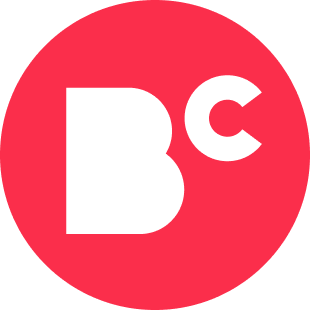What Is Educational Technology?
- Educational Technology (EdTech) is a field that designs and implements technology for educators and students to enhance the learning experience.
- Free tools like Khan Academy, Google Classroom, Canva, Kahoot!, and Quizlet can enhance virtual learning inside and outside of the classroom.
- The lack of technology training and unreliable internet can hinder EdTech implementation.
- You can get an online master’s degree and certifications in educational technology.
Educational Technology (EdTech) is any technology that enhances learning. EdTech can be games, polls, presentations, online assignment dashboards, or even videos teachers utilize to teach.
Most EdTech can be accessed via laptops, tablets, and smartphones so that learning can happen anywhere.
While implementing new technologies in the classroom can be stressful on top of regular responsibilities, EdTech can create a more collaborative environment for students to participate in active learning using technology they’re familiar with.
There are plenty of free and easy EdTech programs to use in your classroom to get students engaged.
Popular Online Bachelor’s in Education Programs
Learn about start dates, transferring credits, availability of financial aid, and more by contacting the universities below.
What Is EdTech?
EdTech is the technology used by instructors in educational, work, and personal settings to enhance the learning experience.
Some EdTech is designed specifically for students, including learning platforms, resources, and dashboards like Khan Academy. EdTech can also be used as a resource to help navigate your educational journey. CollegeLeaps, for example, is a phone app developed by two former Nashville high school teachers to help students track their college preparedness throughout high school.
On the other hand, some tools are used only by teachers to engage students in live learning. Teachers and professors can use participatory EdTech like PollEverywhere and Kahoot!, for example, which engage students in live quizzes and competitions. Other resources like Piazza and Sakai are teacher-class platforms where teachers can assign grades and create forums where students can collaborate, discuss, and submit assignments.
5 Benefits of Using EdTech
In 2020, the National Center for Education Statistics (NCES) conducted a study that found that technology in the classroom:
- Increased student independence and self-directedness: Students are encouraged to seek help through tools like Quizlet to study and discover programs that can help them learn in personal ways.
- Enabled students to learn at their own pace: EdTech tools can encourage students to learn and study on their own time, allowing them to set their own pace.
- Enhanced collaboration: Teachers can use online learning games like Kahoot! that encourage students to work collectively. Google Slides, a free online presentation creator, allows students to work simultaneously or individually on presentations no matter the location, enhancing collaboration.
- Helps students learn more actively: EdTech can make learning more fun, whether in a classroom, workplace, or personal setting. EdTech encourages interaction and play in the service of learning, which can engage students.
- Helps students think critically: When learners are asked to actively engage with material via EdTech like Quizlet or Kahoot!, it also enables them to think critically about the material they’re studying.
15 EdTech Terms to Know
Adaptive Learning: Adaptive learning — or custom learning — programs use software and artificial intelligence to create a personalized learning path for each student.
Asynchronous Learning: This learning format allows students to access pre-recorded lectures and assignments online, enabling self-paced learning from anywhere.
Blended Learning: Blended or hybrid learning combines online and in-person instruction. Students may view lectures or supplemental material online and use class time to complete exercises.
BYOD: This acronym stands for
bring your own device.
As a school policy, it allows students to use their laptops, tablets, or smartphones in the classroom.CMS: Content management systems allow users to create, publish, and share online content. These systems may provide online course delivery and gauge learning progress.
Differentiated Instruction: This responsive teaching method considers the unique characteristics of each student and designs curricula to accommodate these differences.
Digital Badge: Digital badges are awarded to students for their learned skills, positive qualities, or achievements. Companies like IBM and Google also offer digital badges, which indicate that an individual has completed a certain course or training program.
Distance Education: Distance learning enables students to receive instruction via online classes, video recordings and conferencing, and other technology.
Flipped Learning: In a flipped classroom, students watch lectures and other presentations online before class and then spend time at school collaborating with peers and working with teachers.
Instructional Technology: Instructional tech creates effective and engaging learning experiences through software, hardware, and other digital tools.
LMS: Learning management systems are software applications that track students’ progress and deliver learning materials, including textbooks, assignments, and online quizzes.
MOOCs: Massive online open courses allow anyone to enroll and access free online courses. Instruction material may include video lessons, readings, and interactive lessons with user forums.
SIS: A student information system is a web-based platform that keeps track of a student’s performance and progress by recording grades, test scores, and attendance.
Synchronous Learning: This learning format occurs online in real time. The student and teacher experience is similar to a traditional classroom, except it occurs online via a virtual classroom or video conferencing.
Webinar: Webinars use video conferencing software to present live or pre-recorded information on select topics. Live webinars usually enable participants to submit questions and comments.
What EdTech Tools Can You Use in the Classroom?
The following list describes some free, popular, easy-to-use tools that instructors can apply to an array of content areas. The EdTech tools listed below may be used in traditional, hybrid, or virtual learning spaces.
Khan Academy
Khan Academy is a free platform that offers instructional videos, practice exercises, and a dashboard for math, science, computing, history, art history, economics, test preparation, and more. Students can sign up for classrooms where parents and teachers can monitor progress and assign modules.
Google Classroom
Google Classroom is a platform where teachers can personalize their sites, manage students, and measure learning. Teachers can also integrate other EdTech apps into Google Classroom, like Figma, Kahoot!, and Adobe Express.
Premium features allow teachers to use high-quality templates and create classes automatically.
Soon, the premium plan will allow teachers to analyze students’ data.
Canva
Canva is a free user-friendly visual suite where you and students can collaborate or individually create graphics, videos, posters, and infographic.! It comes with a library of free templates and comes with Google Classroom integration.
Kahoot!
Kahoot! is an online quiz creator where teachers can create or find online quizzes for students. Students can use tablets, laptops, or phones to answer in real time and compete for who can answer questions correctly the fastest. After each round, a leaderboard displays who’s winning.
Quizlet
Quizlet is a website where students can create flashcards or utilize community-made flashcards to study. Students can scroll through flashcards, take tests, match terms to answers and more to help study. Quizlet also can transform your notes into flashcards, practice tests, and outlines using AI.
5 Tips for Using EdTech Effectively
With so many tools available, using EdTech can feel overwhelming. Here are some tips to keep in mind while using educational technology in the classroom.
- The EdTech tool should never drive the lesson — rather, it should complement the pedagogy and material.
- Don’t use educational technology just for the sake of using it. Paper and pencil can be just as effective sometimes.
- Take small steps in learning the technology. Don’t get overwhelmed with learning many tools at once. Instead, learn one tool and master it.
- Ask your students for help. Chances are, your students know how to use technology and might be able to help you. Asking for assistance also demonstrates to students that you’re a learner yourself.
- Get to know a tool. Don’t just choose the newest tool without considering how you can use it to enhance your lessons or engage your students. Begin by asking yourself,
How can I use this tool to support my students and my teaching?
Frequently Asked Questions About Educational Technology
Think about instructional technology as the vehicle to deliver teaching experiences while EdTech is the experience itself.
Instructional technology creates learning experiences through technology like interactive whiteboards, virtual reality, computers, projectors, or anything that is used to deliver an experience.
Note: The insights on this page — excluding school descriptions — were reviewed by an independent third party compensated for their time by BestColleges. Page last reviewed March 1, 2024.




